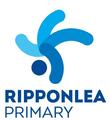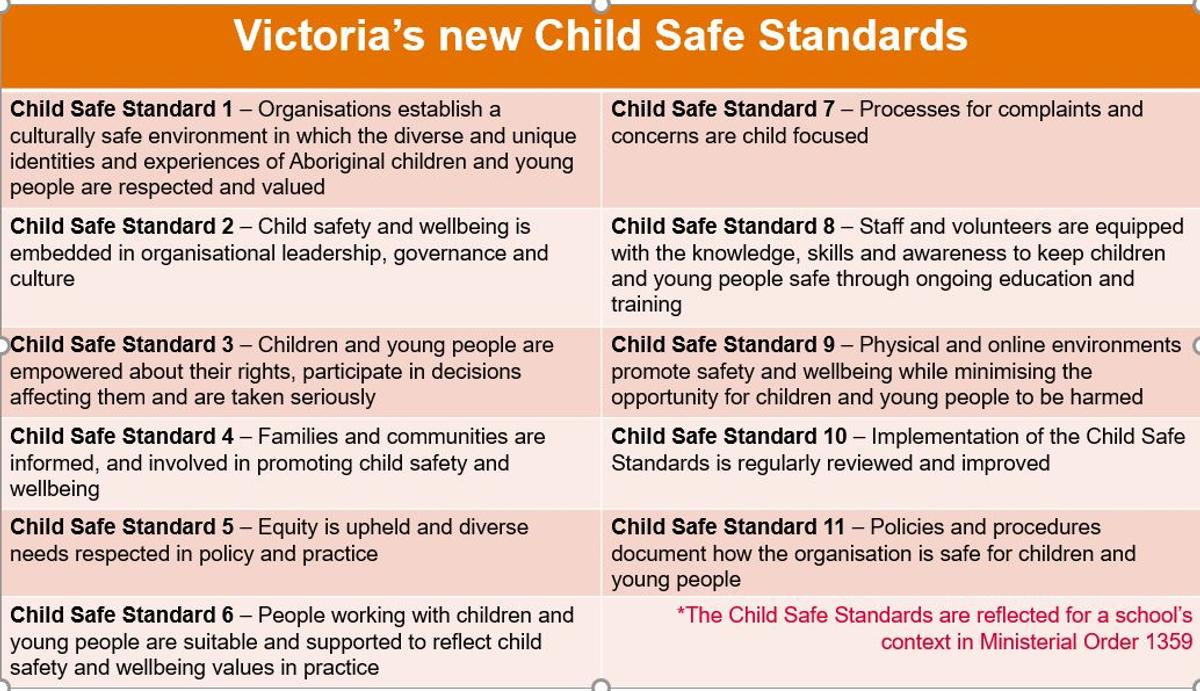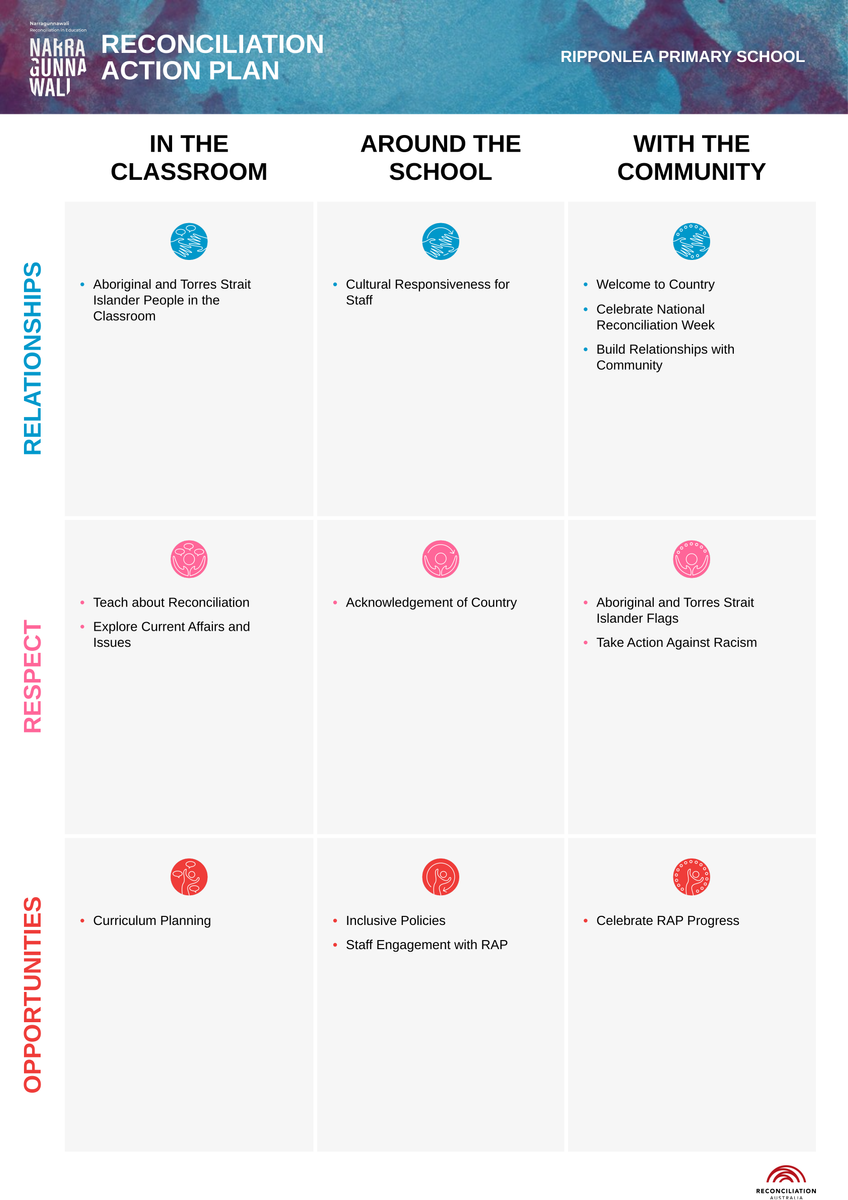CHILD SAFETY IS EVERYONE'S RESPONSIBILITY

GETTING TO KNOW THE CHILD SAFE STANDARDS & WHAT RPS DOES
Standard 1 -Culturally safe environments
Establish a culturally safe environment in which the diverse and unique identities and experiences of Aboriginal children and young people are respected and valued.
Cultural safety includes being provided with a safe, nurturing and positive environment where Aboriginal children:
- feel comfortable being themselves
- feel comfortable expressing their culture, including their spiritual and belief systems
- are supported by carers who respect their Aboriginality and encourage their sense of self and identity.
There are many actions our school takes to address this standard.
Build a strong school culture to support cultural inclusion
- Begin events and meetings with an Acknowledgement of Country as a standing agenda item. Use this as an opportunity to pause and reflect or open a discussion.
- Fly the Aboriginal and Torres Strait Islander flags on school grounds.
- Display plaques and signs to acknowledge Country and Traditional Owners.
- Celebrate the local Aboriginal community in communications with students, staff, volunteers and families. Share information through school newsletters and school assemblies.
- Lead on safety and inclusion for all Aboriginal students and their families. Learn more about Aboriginal histories and cultures, both locally and across Australia. Speak with respect and confidence about Aboriginal culture, knowledge systems and people.
- Build schoolwide knowledge of Aboriginal histories, cultures, perspectives, values, skills and attitudes.
Provide a welcoming environment for Aboriginal children
- Acknowledge and draw on the existing knowledge of Aboriginal students and their families.
- Use Koorie Engagement Support Officers (KESOs) to provide advice to our school about creating culturally inclusive learning environments.
- Use the Marrung Aboriginal Education Plan 2016–2026 to guide the school’s support for Aboriginal self-determination.
Actively address racism
- Express zero tolerance of racism in our statement of commitment to child safety included in our Child Safety and Wellbeing Policy and other documents.
- Address racism from students, staff, volunteers or visitors directly. Make sure racist speech or actions are always dealt with, and the culture of the school works to prevent incidents from occurring.
- Encourage non-Aboriginal school leaders and teachers to commit to ways they can work as an effective ally to Aboriginal students, their families and communities.
Guide and train staff and volunteers
- Train staff and volunteers to understand the importance of Aboriginal culture to the wellbeing and safety of Aboriginal students.
- Work with the local Aboriginal community to build staff, volunteer and student knowledge and respect for Aboriginal culture and to promote cultural inclusion.
- Arrange Community Understanding Safety Training (CUST) or equivalent for staff.
Build knowledge of Aboriginal culture in school planning and curriculum
- Find out about the Traditional Owners of the land/s where the school is situated at the Map of Indigenous Australia and learn about the importance of acknowledging Traditional Owners.
- Include Aboriginal history and culture in professional learning for staff and volunteers and in curriculum planning for students.
- Develop a resource bank of digital, hardcopy print and other artefacts that support the inclusion of Aboriginal content across the curriculum.
Partner with Aboriginal communities
- Engage with local Aboriginal communities via Traditional Owner groups, corporations or the Registered Aboriginal Party to review cultural safety in school environment, systems and processes.
- Engage with the Local Aboriginal Education Consultative Group (LAECG) and/or the Victorian Aboriginal Education Association Incorporated (VAEAI).
- Visit an Aboriginal cultural learning centre, such as
- Koorie Heritage Trust (Melbourne)
Bunjilaka Aboriginal Cultural Centre (Melbourne)
Review and assess how the school supports cultural inclusion
- Use the Victorian Aboriginal Child Care Agency cultural safety continuum reflective tool to make a tailored learning and development plan focused on staff cultural competence learning needs.
- Develop and implement an Aboriginal and Torres Strait Islander Reconciliation Action Plan.
Recognise key events and anniversaries
Harmony Day
21 March
Reconciliation Week
27 May to 3 June
NAIDOC week
First week of July
National Aboriginal and Torres Strait Islander Children’s Day
4 August
International Day of Indigenous People
9 August
Ripponlea Primary School’s Commitment to Reconciliation
Did you know that Ripponlea Primary School has an official Reconciliation Action Plan (RAP) in place, outlining 14 key actions to be achieved by the end of 2025?
Our RAP is more than a document — it's a commitment to strengthening relationships, deepening respect, and creating meaningful opportunities with and for Aboriginal and Torres Strait Islander peoples. It is our school’s roadmap for contributing to the broader movement of reconciliation in Australia.
At the heart of this work is our school’s Marrung Champion, Mrs Julie Nield, a passionate educator who brings cultural knowledge, inclusiveness, and integrity to this space. She is a valued member of our RAP Working Group, which includes staff, parents, and community members, all working together to embed the principles of reconciliation into everyday school life.
Our Vision for Reconciliation
Ripponlea Primary School aims to create generational change through awareness, openness, and solidarity with First Nations peoples. We acknowledge and respect Aboriginal and Torres Strait Islander peoples as custodians of the world’s oldest continuing cultures and commit to learning from and walking alongside them.
Our vision is for all members of the school community to become activists, leaders, and advocates for reconciliation — to build a harmonious and open-minded place in which we live, play, and learn together.
What’s in Our Plan?
Our RAP focuses on three key areas:
- Relationships – fostering strong connections with the local Aboriginal and Torres Strait Islander community and embedding Indigenous voices in the classroom.
- Respect – celebrating National Reconciliation Week, flying the Aboriginal and Torres Strait Islander flags, regularly conducting Acknowledgements of Country, and actively learning about histories, cultures and current issues.
- Opportunities – reviewing and developing inclusive curriculum plans and school policies, ensuring staff engagement with RAP actions, and celebrating progress across the school and community.
Some specific actions include:
- Welcoming Elders and Traditional Owners to share culture and knowledge.
- Teaching students about the history and meaning of reconciliation.
- Taking action against racism through a whole-school approach.
- Displaying flags and physical Acknowledgements of Country.
- Engaging all staff in cultural responsiveness training.
Why This Matters
Education plays a crucial role in reconciliation. By actively embedding Aboriginal and Torres Strait Islander perspectives in our curriculum, school culture, and community engagement, we are helping shape a future where equity, understanding and respect are lived values.
We encourage families to learn more about our RAP and be part of the journey. You can speak to Mrs Julie Nield or any member of our RAP Working Group if you’d like to contribute ideas or get involved in events and learning experiences throughout the year.
Together, we walk the path of reconciliation — not just during NAIDOC or Reconciliation Week, but every day.


